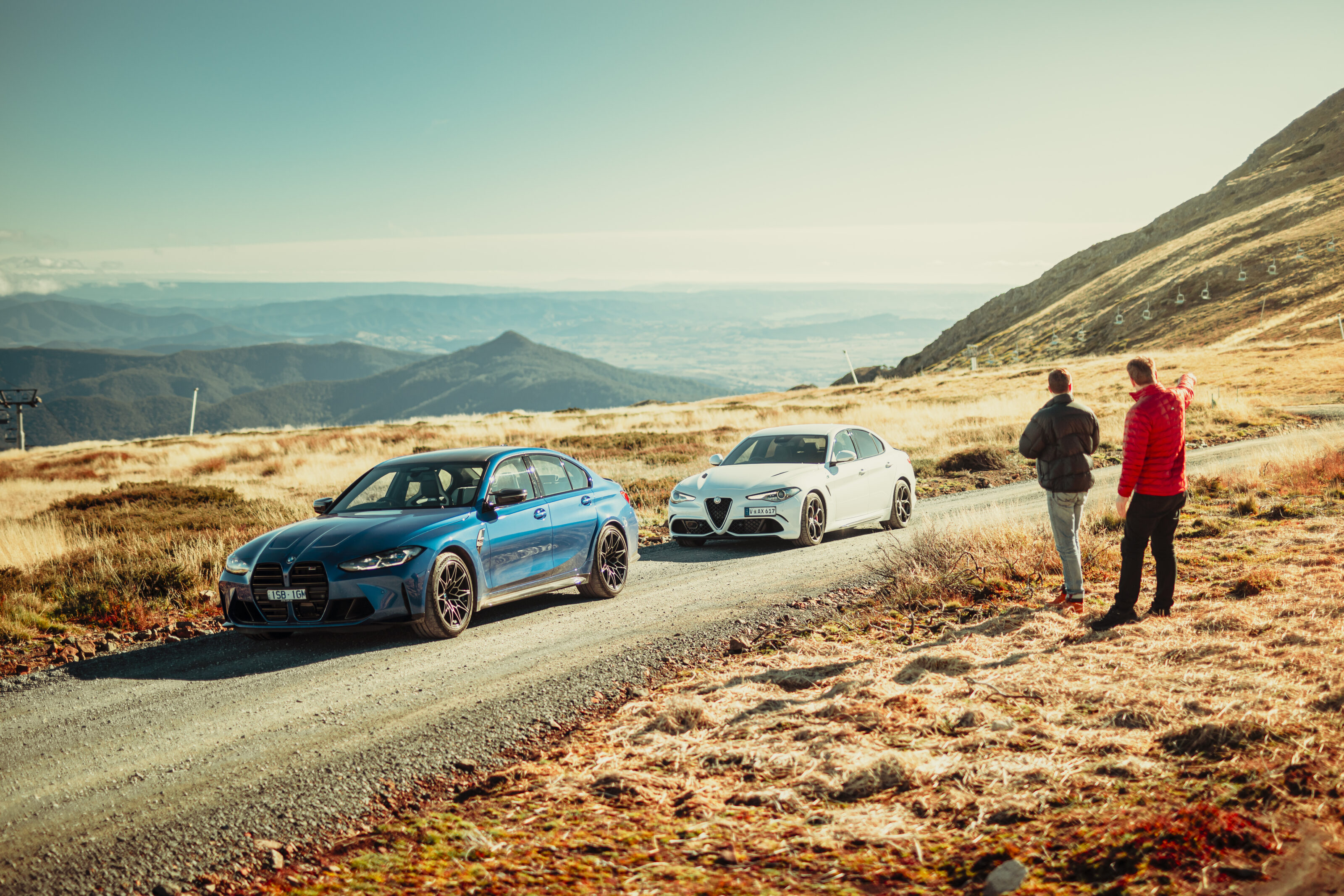Three, two, one, fire! Up through first, big flare of wheelspin, correct quickly, second, third another huge armful of lock as the BMW M3 Competition splashes through standing water at Heathcote dragway. This is terrifying. The surface is cold, damp and there’s a rainbow sheen leaching out of the bitumen patching.
The numbers today are barely worth consideration. What is worthy of note is that the Alfa Romeo Giulia Q is a receding speck in the BMW’s overstyled mirrors.
On the face of it, this shouldn’t happen. Both have identical 375kW power outputs yet the Alfa is around 200kg lighter. Both are on focused R tyres, the Giulia on P Zero Corsas and the M3 on Pilot Sport Cup 2s, yet time and again, the BMW hooks up and somehow sniffs out traction.
Put it down to a tyre compound better suited to the cold, a fractionally larger rear contact patch and smarter traction control software, but know that in the real world, a Giulia Q is never going to monster an M3 Competition off the line. Drag race done.
WEDNESDAY 8pm – MERRIJIG
The remains of the day are compressed to an occidental ribbon of aquamarine ahead, noctilucent streaks fading from blue to black. Overhead, a carpet of stars explodes out of the near horizon of silhouetted mountain peaks, our galaxy, viewed from our remote location somewhere on its Orion Arm.
In the distance, a light clicks on in a remote farmstead sited on a bluff overlooking the Delatite river valley. The car ticks and pings cool on the road’s shoulder after a helter-skelter descent of Mount Buller.
I’d already been down once and then turned around and drove back up to the top to do it all over again, for no good reason other than the fact that I could. The BMW M3 Competition is that sort of car. A car that will leave you wrung out and slightly euphoric, standing alone in the night ordering your thoughts to the sound of hopeful cicadas and a chorus of frogs.
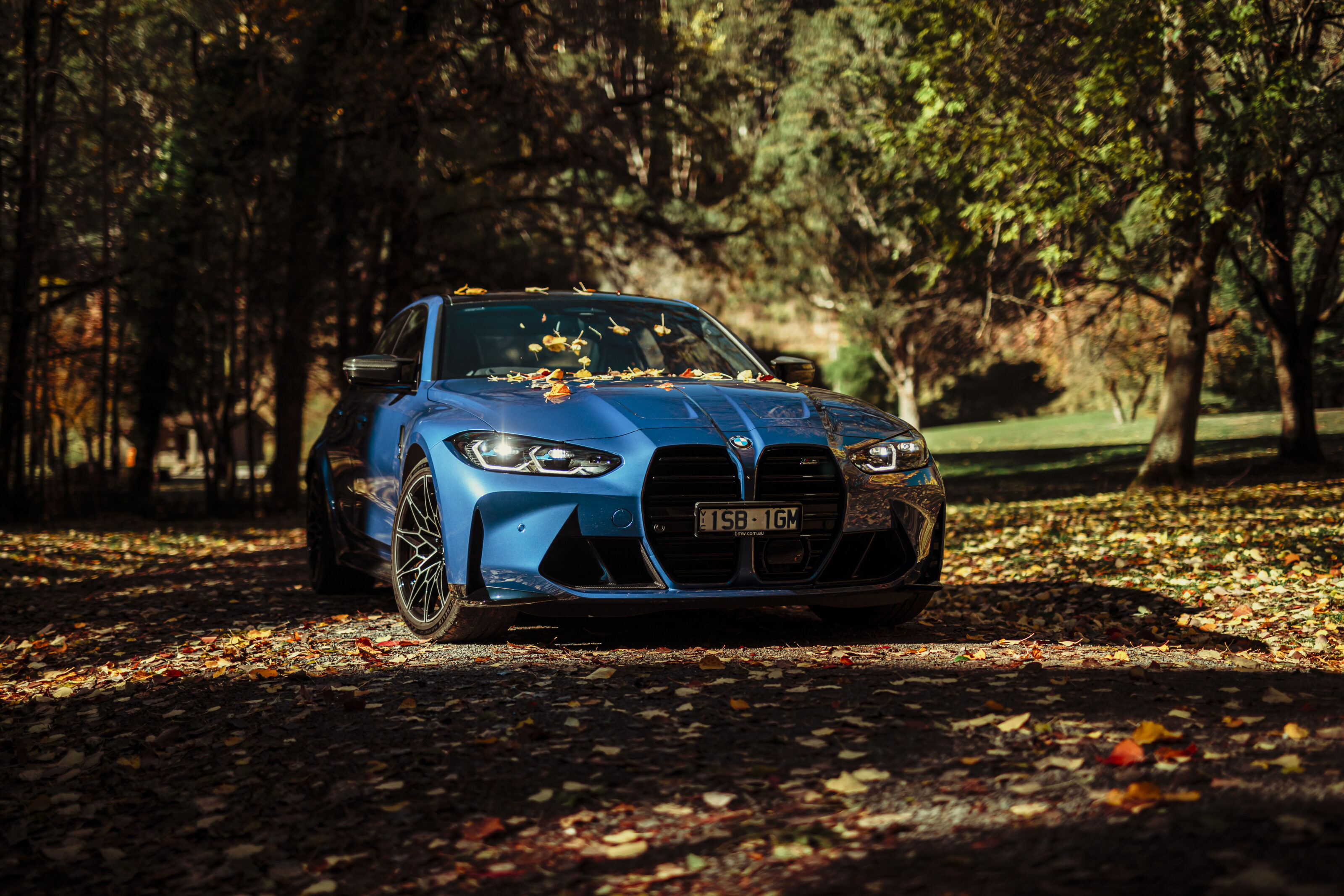
“In the real world, a Giulia Q is never going to monster an M3 Competition off the line”
Viewed objectively, the BMW ought to be night and day better than the Alfa Romeo Giulia Q. That’s the nature of evolution and it’s clear where a version of automotive natural selection has taken place, the Bavarian sedan adopting those traits that the Giulia introduced back when we first drove it in 2017. It was a revelation then. I was writing for Wheels magazine and realised that it had changed the rules in the class, when it was put up against the prior BMW M3 and Mercedes-AMG C63 S. Here’s how I introduced the car back then.
“You’re supposed to make it look hard? I thought you were supposed to make it look easy,” said extreme skiing world champ Doug Coombs as he watched a fellow competitor huff and puff his way in a series of staccato hops down a competition face.
Coombs flowed down the steeps like a water droplet, effortlessly finding the path of least resistance, smearing and melding turns into the contours of the mountain.
I’m minded of that quote right now as I attempt to hold station with a well-driven Alfa Romeo Giulia Quadrifoglio. The Italian car is all sinew and suppleness, as if gently pressed to the road’s ruts, compressions and decreasing radius corners by a benign celestial hand.
The Mercedes-AMG C63 S I’m driving instead adopts a different philosophy, attempting to bludgeon Australia’s impertinent topography into submission through sheer surfeit of Newton metres; hopping, kicking, shunting and when in doubt, defaulting to a full Wagnerian sonic assault. It doesn’t keep up. It can’t. Nor can the BMW M3 Competition receding in my mirror. Both are attempting to smash a hammer through butter when what’s needed is a hot knife.”
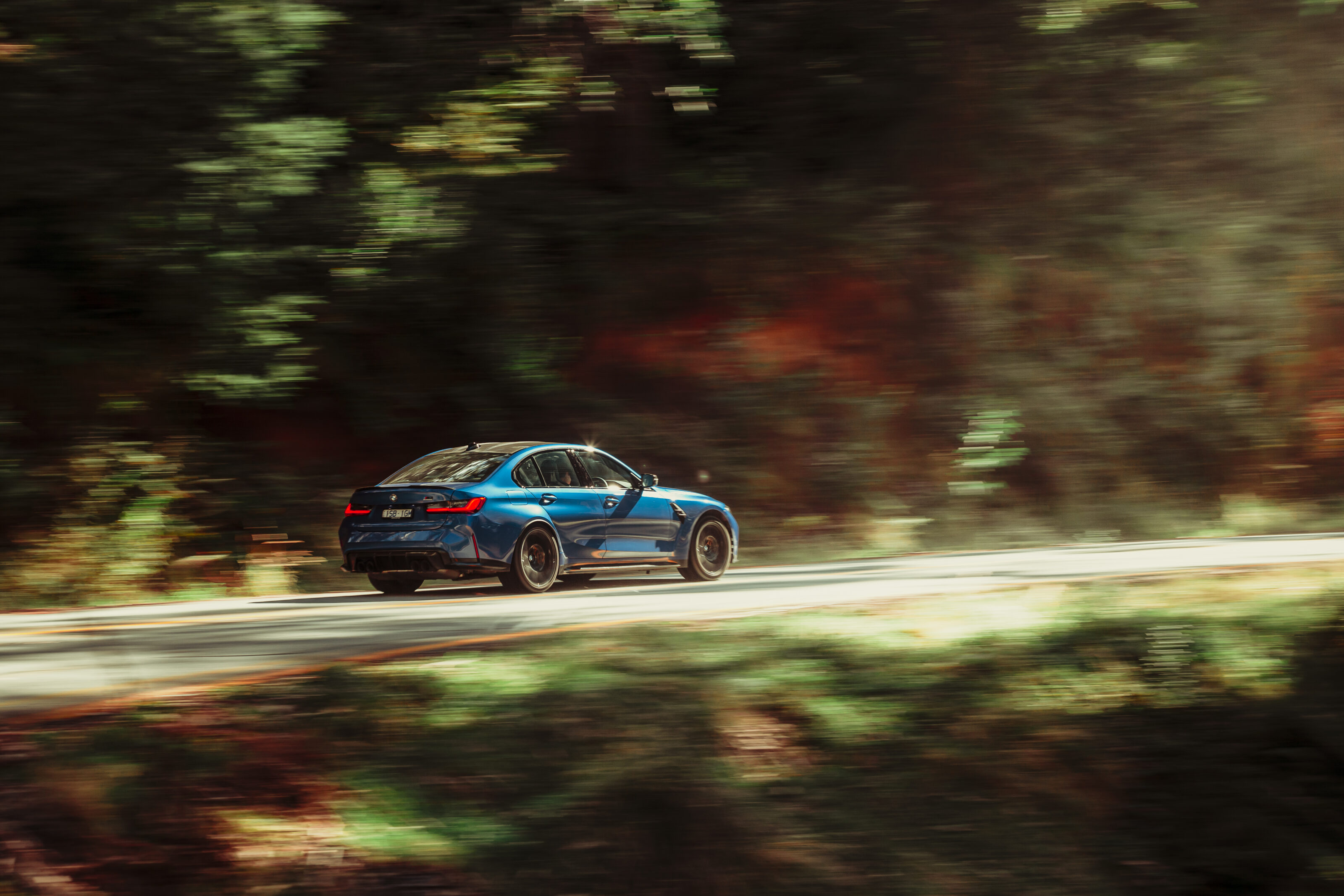
A new hot knife, finished in Portimao Blue, now sits before me on the dark road out of the high country.
Lessons have clearly been learned from the insouciant manner in which the Alfa brushed aside its established rivals.
Stone chips start loosening their bond from the cooling tyres and clink to the bitumen. A jet blinks silently high in the heavens, a reminder of when we were something other than a hermit isle.
Four years ago seems a very long time given how events have unfolded in the interim, but BMW has certainly packed a lot of development into that period. The M3 Competition feels dense, as if all that intellectual property has a physical mass to contend with, the dizzying ecosystem of buttons, dials, tabs, modes, and esoteric functions layered within its iDrive 7 system.

THURSDAY 8am MANSFIELD
The Alfa Romeo Giulia Q is still a beguiling thing and, after a couple of days with the two cars, I like it more than the BMW.
I like the way that it disguises digital as analogue, how it simplifies and distils the driving experience. But here’s the rub. I don’t think you like it more than the BMW. In fact, I know that you probably don’t.
In the period that the Giulia Q has been on sale here, it has totalled fewer sales than the BMW M3’s worst single-year showing over that same period. M3 sales have grown year on year between 2017 and 2021, Giulia sales have nosedived.
The 3 Series sedan range as a whole outsells the Giulia range by 17 to one. It seems almost nobody was brave enough to put their hand into their own pocket for the Alfa but look at resale values and they’re pretty much identical.
About $95k buys you similarly tidy 2017 examples of Giulia QV (as it was badged then) and BMW M3 Competition. In other words, the fear that you’d lose your shirt on the Giulia created an exclusivity that then served to bolster residuals. Ah, the unintended consequences of supply and demand.
It’s at this point that I probably ought to say that I can understand why because x,y and z went wrong with the Giulia on our test, but it didn’t. It felt as tight as a drum throughout, and the recent investment in refreshing the interior might have been modest, yet it makes itself felt in the quality of the touch points.
Remember that unfinished plastic flashing that your fingertips scraped up against on the old gear lever? It’s now a cushioned leather wrap with a lovely Italian tricolore legend at its base. The old postage-stamp infotainment screen has been junked for a slicker 8.8-inch touchscreen and the steering wheel has been redesigned for better quality and control functionality.
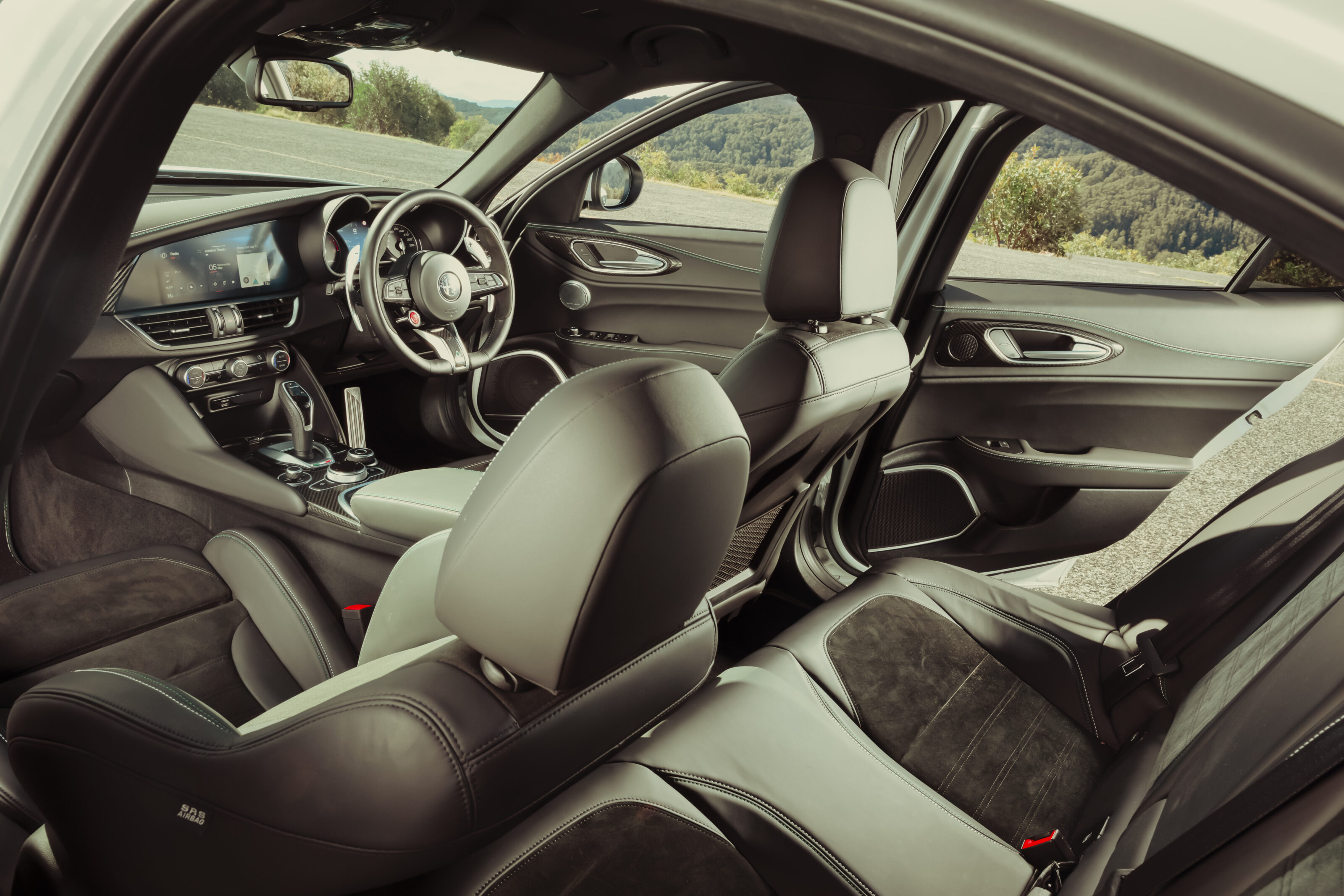
We’re at the base of Mount Buller and there’s a section of road here that highlights a key difference between the two cars. It’s a deeply dished left-hander that climbs sharply uphill and then the benign camber just vanishes. Both the M3 and the Giulia come through line astern and the M3 hunkers down and then holds its line as the camber disappears.
The Alfa Romeo lolls into oversteer as soon as its P Zero Corsas lose the benefit of the camber. Both cars are running on 285/35 rear tyres but the BMW has 20-inch Pilot Sport Cup 2s at the back compared to the Alfa’s 19-inch hoops, so the contact patch is 10.6 per cent larger. Given what we discovered at a cold and wet Heathcote, the Michelins also seem comparatively more tolerant to single-digit temperatures than the Pirellis.
Despite the BMW’s torque and traction advantage, it can’t gap the Alfa on road. These advantages are offset by the Italian car’s superior power-to-weight ratio, which sees it wielding 230kW per tonne against the Bavarian’s 217kW. Put that down to the industrial strength bracing up front in the M3, which cages the S58 lump between bars that run dome to dome, dome to bulkhead and dome to chassis struts and they’re key to how the M3 tackles a road.
Get the front end right, finesse the way the car presents its front tyres to the road surface and the rest is easy, reasoned the team at Garching. They’ve certainly aced that assignment.
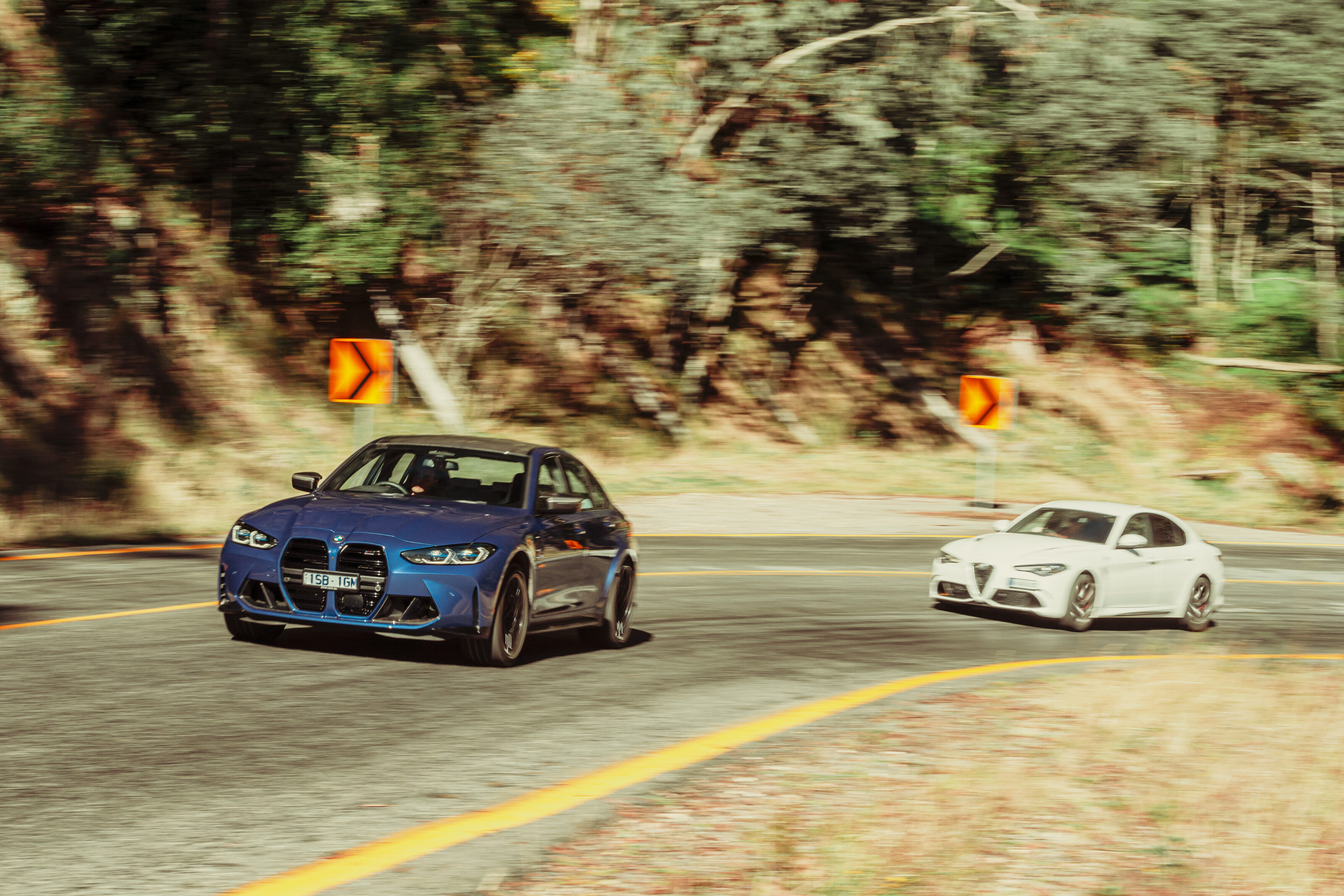
I know that the G80 M3 Competition will understeer. That’s simple physics. Unfortunately, we weren’t able to throw enough physics at it to make that happen. Loosen the electronic shackles with the near-genius M Dynamic Mode and you can happily slither it around heroically, the system deciding whether you’re competent and if it deems you are, and that you’ve dialled in the correct amount of lock, it’ll keep giving you power.
Switch everything off and it’s only then that you feel those masses at play. There’s a zone between half a hand of correction and hanging it all out where the combination of electronically controlled diff and the variable ratio M Servotronic electrically assisted steering can feel a bit spiky, but certainly no worse than the last F80 model. That had a distinctly malicious side to it.
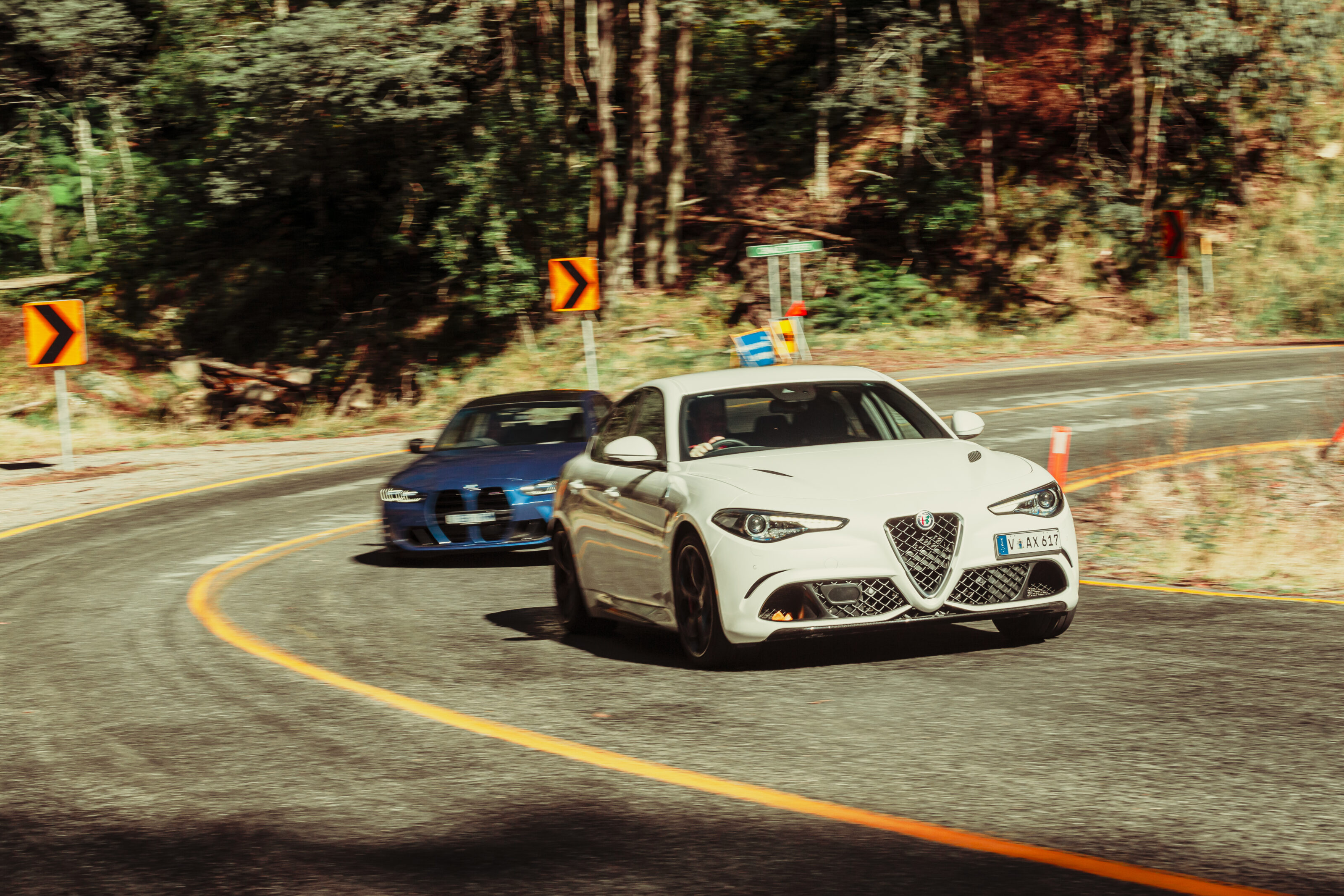
Aside from the limit handling, the three most significant areas of change are the weight (up 175kg over its predecessor), the styling (you be the judge on that one) and the transmission, which ditches the whipcrack dual-clutch transmission in favour of an eight-speed ZF torque-converter automatic.
While I miss the immediacy of the old DCT ’box, the auto isn’t a whole lot slower, is a good deal more refined around town and in ‘normal’ driving and when you’re really on it, the combination of a bit less rear spring rate and the ZF’s ability to slur seamlessly through the gears doesn’t shock the driveline like the old dual-clutch. A win on points for the new gearbox, in other words.
The Giulia shares the same ZF transmission, just one area where the G80 M3 seems to have watched and learned from Alfa Romeo. The immediacy of the steering and the pliancy of the ride are also characteristics that BMW has subtly cribbed from the Italian. Despite its heft, body control is excellent, with the perfect amount of pitch and roll to cue you in to what’s happening at the contact patches beneath you.
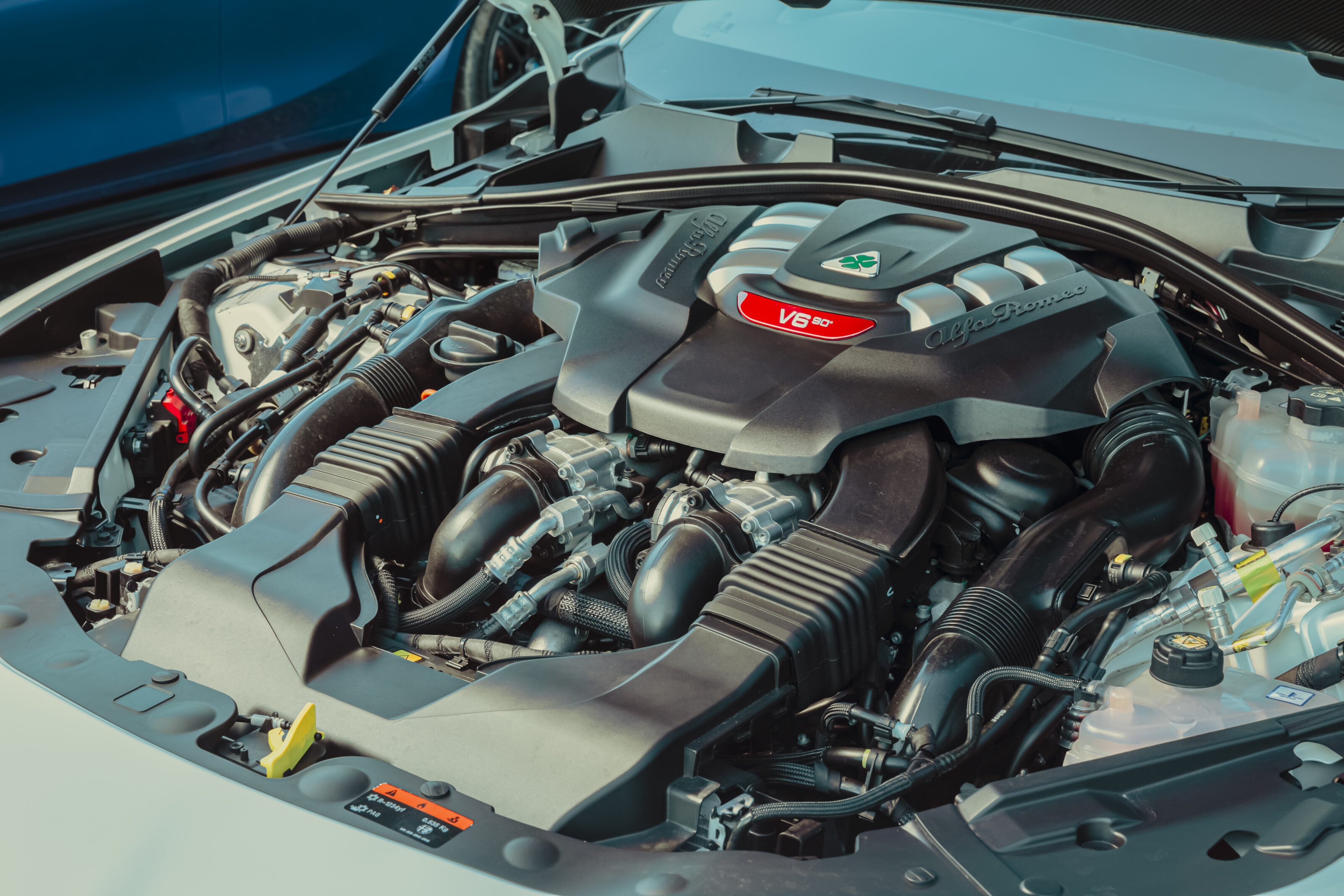
Jump into the Giulia and it feels as if you’ve stepped back in time. Everything is simpler to operate and that’s no bad thing. The DNA drive mode controller is easy to get to grips with, a long anti-clockwise twist switching it into Race mode, where the Ferrari-influenced 2.9-litre V6 really finds its voice. It’s louder than the BMW outside the car and the sound effects inside are more authentic, too.
Not that the BMW sounds bad. In fact, I had to ask the video team which of the two cars sounded better from the outside at which they looked at me as if I’d just been kicked in the head by a horse.
“The Alfa, of course. It’s about twice as loud as the BMW.”
That impression of parity from the cabin is largely due to some very clever sound symposer work from the engineers at Garching, which fills the interior with a decent approximation of a building straight-six howl from as little as 3500rpm.
That helps, because the S58 isn’t an engine you’ll go pinging the redline with. It’s effective and feels gutsy and bulletproof, but it isn’t tinged, subjectively at least, with the top-end hedonism of Alfa Romeo’s Ferrari F154-influenced powerplant.
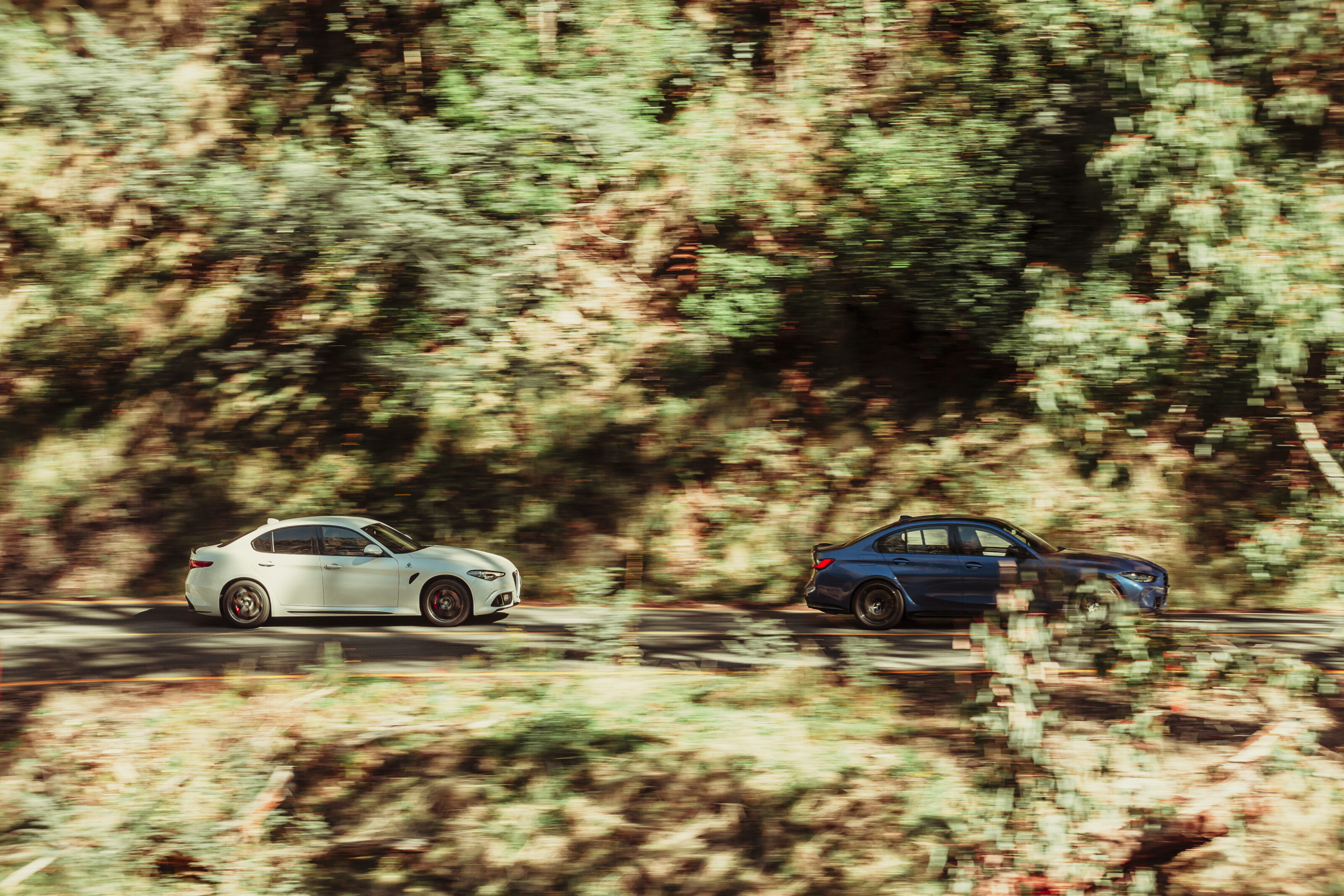
The 690T engine in the Giulia Q retains the F154’s 90° cylinder angle, 86.5mm bore, 82.0mm stroke and dual IHI-sourced single-scroll turbochargers but gets a revised aluminium cylinder head, a forged nitrided steel crankshaft and a different crankcase.
If you were ever slightly sniffy about the appeal of a V6 versus an inline-six, consider this an education. Alfa claims that peak torque of 600Nm runs from 2500 to 5500rpm, but dyno plots I’ve seen suggest a 3500rpm peak, after which the torque begins to tail off, with 96 per cent of peak torque generated at 5000rpm.
The BMW’s S58 makes its peak figure of 650Nm at 2750rpm and retains that strong and long to 5510rpm. Because of this, you never feel as if you need to be plucking gears like crazy in the M3 and you also feel reassured that even a modest glitch in the transmission’s logic will be easily mopped up by that huge swathe of torque on offer when you pick up the throttle at the apex.
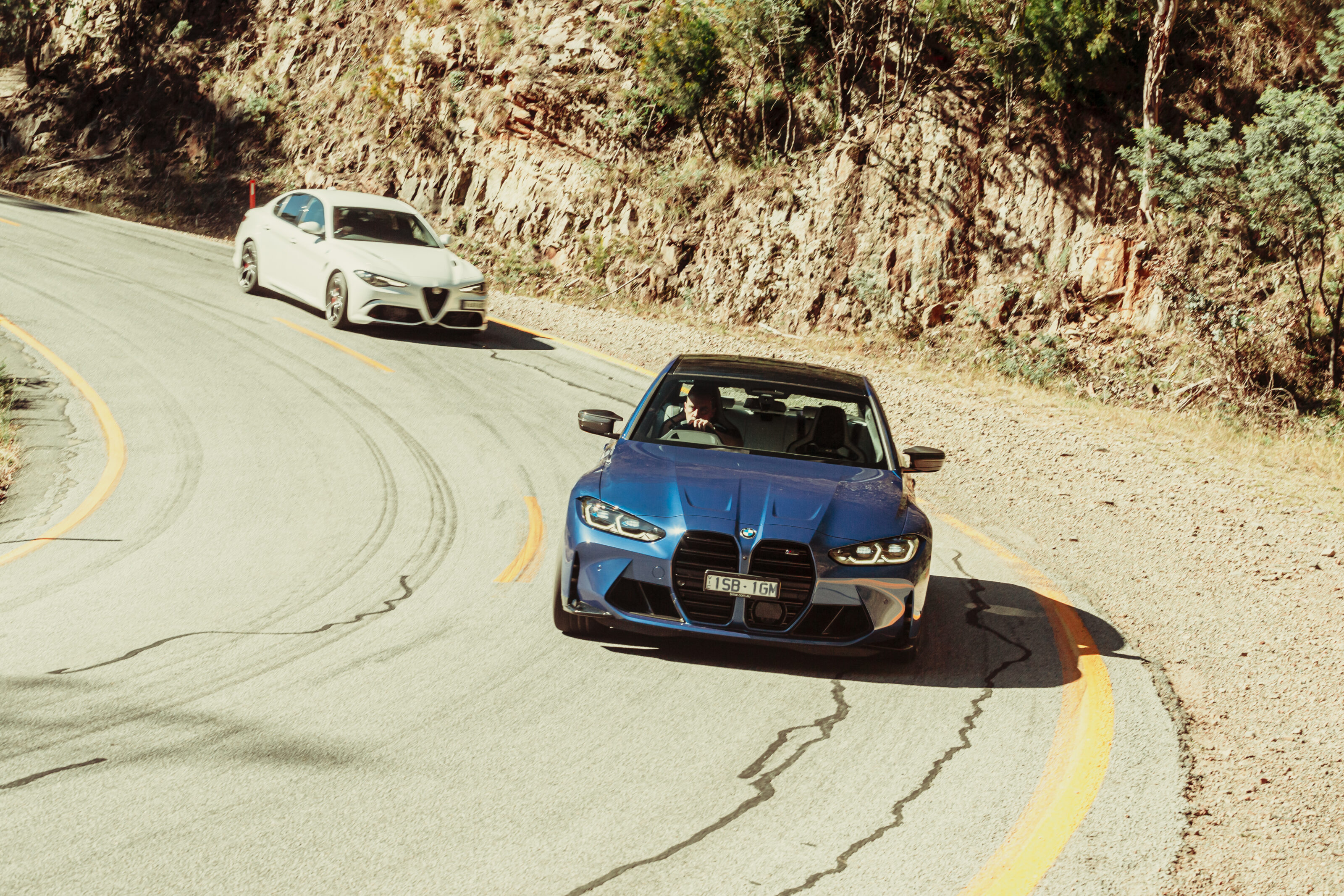
There are very pronounced differences in feel on the way into a corner too. Whereas you heave the BMW’s obese steering wheel into a corner as if you’re hefting a baseball bat, the Giulia’s thinner wheel feels as if you’re always guiding it with your fingertips. Yes, as we already know, the Brembo brake-by-wire system takes a bit of getting used to, but within a few hours you’ll have the hang of finessing the brake pedal.
What the Giulia signally lacks is any sort of stability control safety net when you are in Race. You’re on your own there.
Fortunately, it’s such a talented chassis that this rarely feels a problem. In Dynamic, the ESC will step in rather heavy-handedly just when you think you’re about to go all Chris Harris.
There’s no halfway system like the BMW’s M Dynamic Mode and that would be something for the replacement, but it looks like this Giulia Q will be the end of this particular line, if Alfa’s recent pronunciations about the death of the multi-billion euro Giorgio platform are anything to go by.
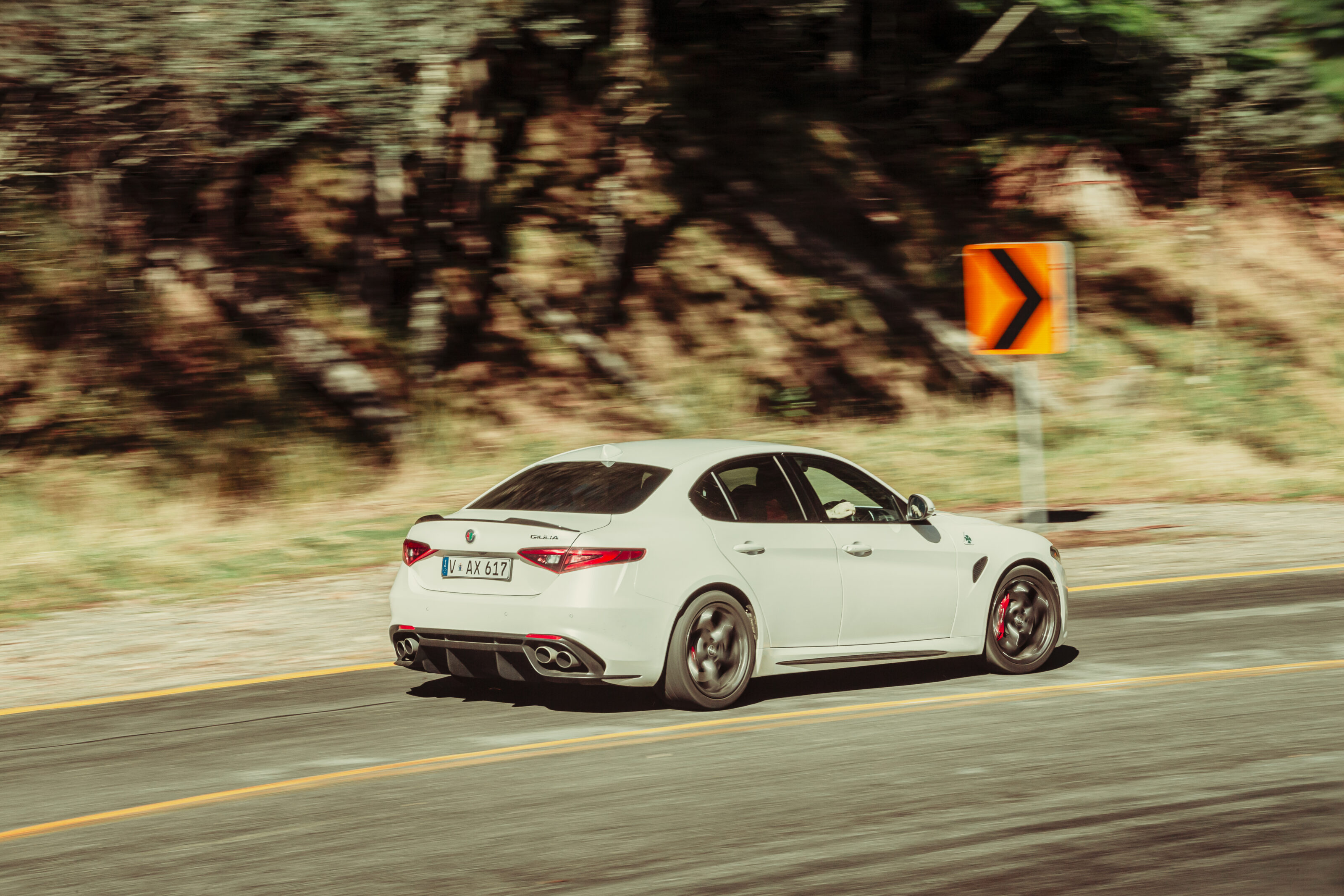
Originally slated to be used by 15 models, it now looks like the Giulia and its SUV sibling, the Stelvio, will be the only vehicles to ever use the chassis. Alfa Romeo’s new CEO, Jean-Philippe Imparato, has stated that future Alfa Romeo models would use Stellantis’ STLA large-vehicle architecture instead of the Giorgio.
While that’s a shame, it instantly makes the Giulia Q one of the most nailed-on future collectible classics currently on sale.
These are two truly excellent cars. It’s a testament to the Alfa Romeo Giulia Q that the decision is this close.
It’s had a modest interior refresh of late, but to all intents and purposes this is the same car that we first drove in 2017 and it ought to have been chewed up and spat out by the pace of change. It hasn’t.
If anything, it feels refreshingly shorn of the sort of expensive and pointless frippery that burdens many modern cars. You don’t need a Drift Analyzer or Remote Engine Start or an automatic bootlid. Really. They’re the reason – along with the optional $26k M Carbon Package – why this M3 Competition carries a price tag of $183,980 before on-roads.
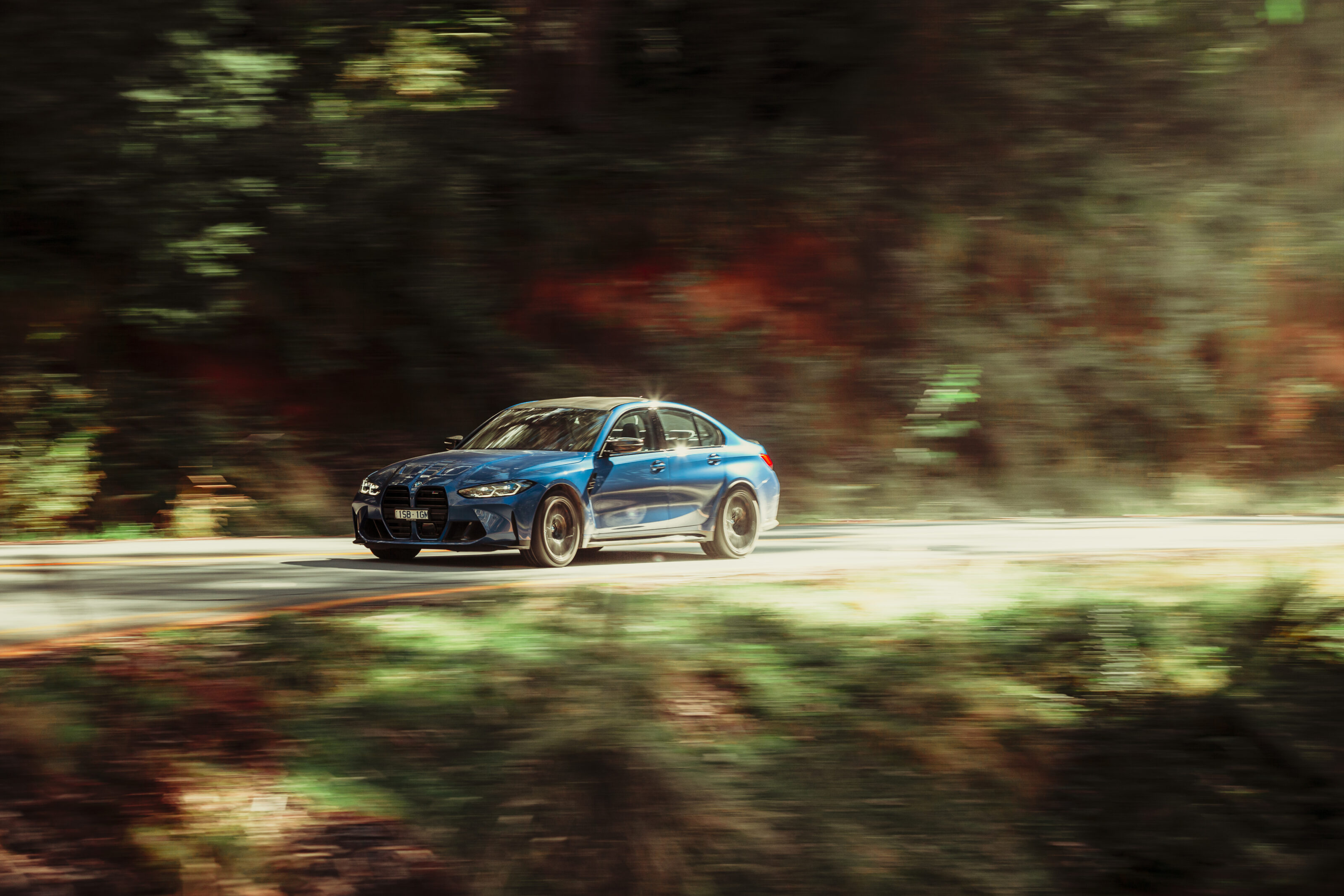
Even stripped back to its bones, the M3 Competition is $154,900, which contrasts with the $138,950 asked of the Giulia Q and even with the BMW’s extended carbon pack, which includes the carbon ceramic brakes and incredible carbon bucket seats, its bonnet will still be made of aluminium, rather than the Alfa’s beautiful carbon fibre item.
You no longer even get the lovely carbon brace in the M3’s engine bay, the workmanlike steel structures possessing no great beauty.
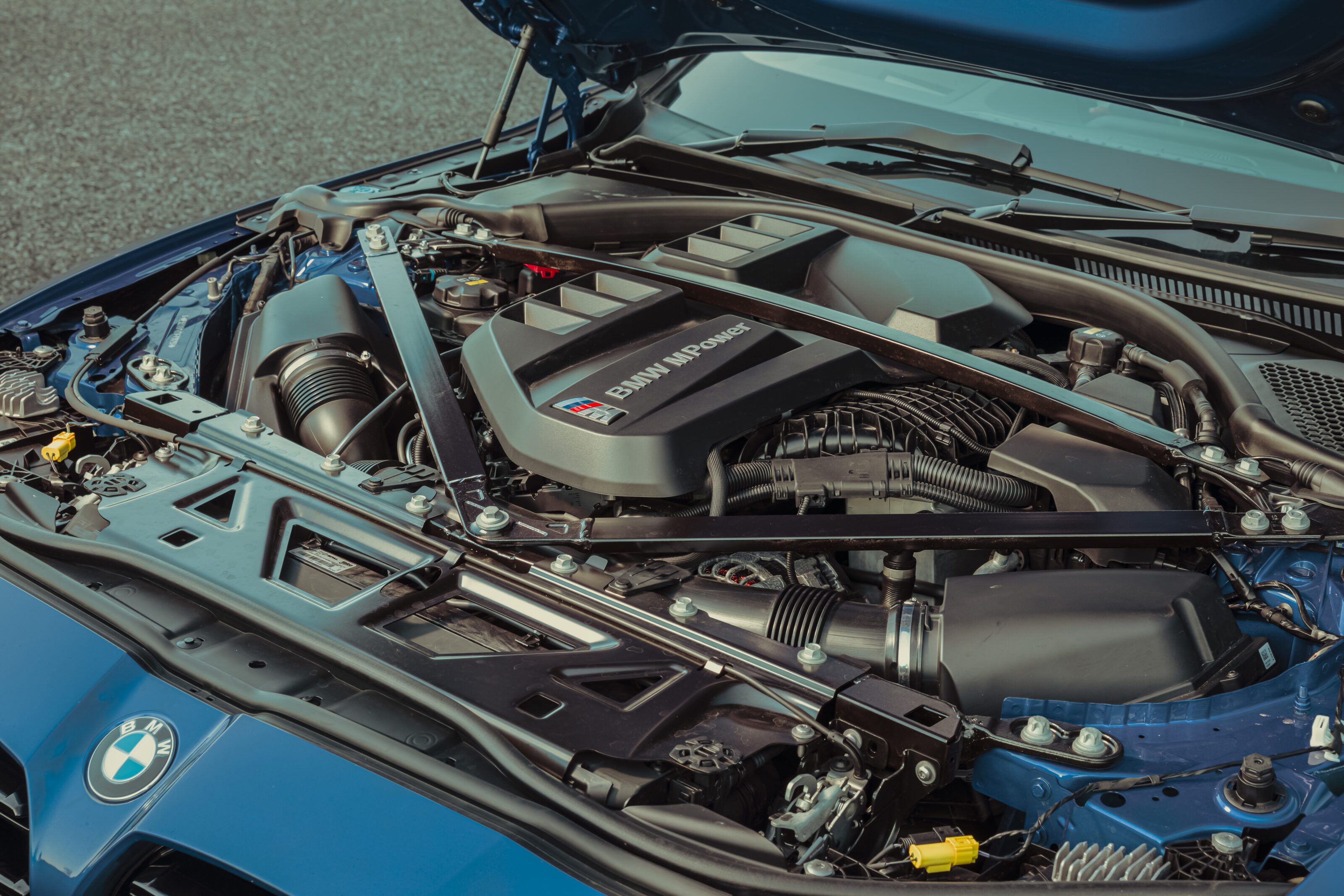
No great beauty.
That could sum up the latest BMW M3 Competition were it not for the fact that beauty can be found in strange places and that things are beautiful if you love them.
Whether you could find a place in your heart for the G80 M3 is a vexed question. It’s brutish and undeniably effective, and is probably the best M3 we’ve had since the E46, which puts it on an exceedingly high pedestal.
It’s a towering achievement and has the Giulia Q covered in most dynamic regards, as indeed it ought to. Were I paying my money the BMW is the car I’d probably buy, yet on the rare occasions that I chanced upon a Giulia Q passing the other way, I’d curse my lily-livered soul.
Those curses would be charged with the knowledge that these cars rage against the dying of the light for solus internal combustion sports sedans.
Mercedes-AMG has already blinked and pursued a hybrid future with its next C63e. Therefore the choice between the Alfa and the BMW could well prove the last new car purchase of this particular type you ever make.
Choose wisely, but know that whichever of these two you choose will be a car revered for many years to come. If these are the end of days for cars like this, then perhaps I’ll be forgiven for breaking off the convoy in the Alfa, swinging it back towards the dark mountain forests and drenching the night with the howl of a dying breed.
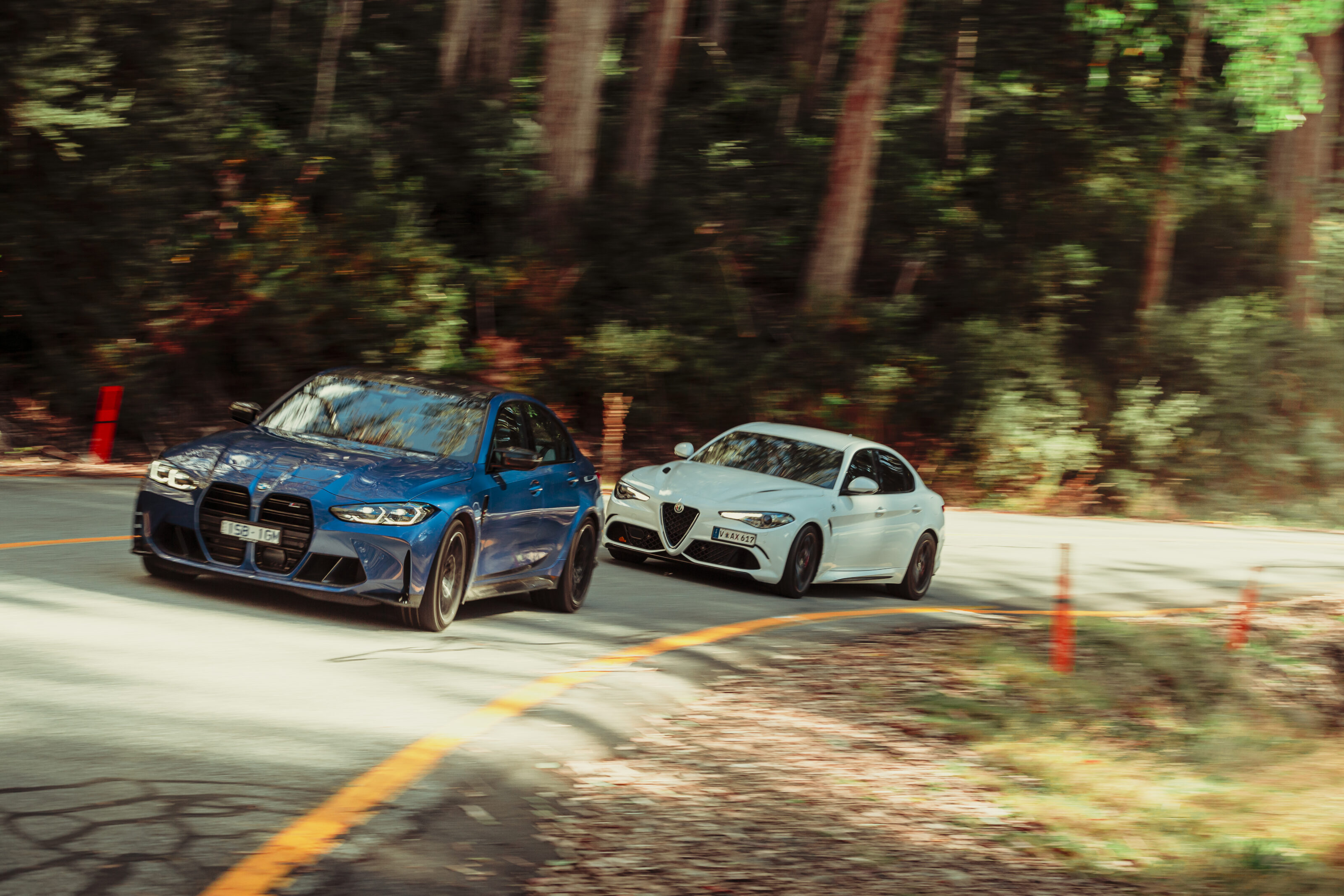
BMW M3 specs
- Body: 4-door, 5-seat sedan
- Drive: rear-wheel
- Engine: 2993cc inline-6, DOHC, 24v, twin-turbo
- Bore x Stroke: 84.0 x 90.0mm
- Compression: 9.3:1
- Power: 375kW @ 5510 – 7500rpm
- Torque: 650Nm @ 2700-5510rpm
- Power-to-weight: 217kW/tonne
- Transmission: 8-speed automatic
- Weight: 1730kg
- Suspension: double A -arms, coil springs, adaptive dampers, anti-roll bar (f); multi-links, coil springs, adaptive dampers, anti-roll bar (r)
- L/W/H: 4794/1903/1437mm
- Wheelbase: 2857mm
- Tracks (f/r): 1617/1605mm (f/r)
- Steering: electrically assisted rack-and-pinion
- Brakes: 380mm ventilated discs, 6-piston calipers (f); 370mm ventilated discs, single-piston floating caliper (r)
- Wheels: 19.0 x 9.5-inch (f) 20 x 10.5-inch (r)
- Tyres: 275/35 ZR19 100Y (f) 285/30 ZR20 99Y (r) Michelin Pilot Sport Cup 2
- Price: $154,900
- Pros: Huge grip; punchy engine; slick interior; clever drive modes
- Cons: Styling not to all tastes; weight/size; brutish in feel; getting expensive
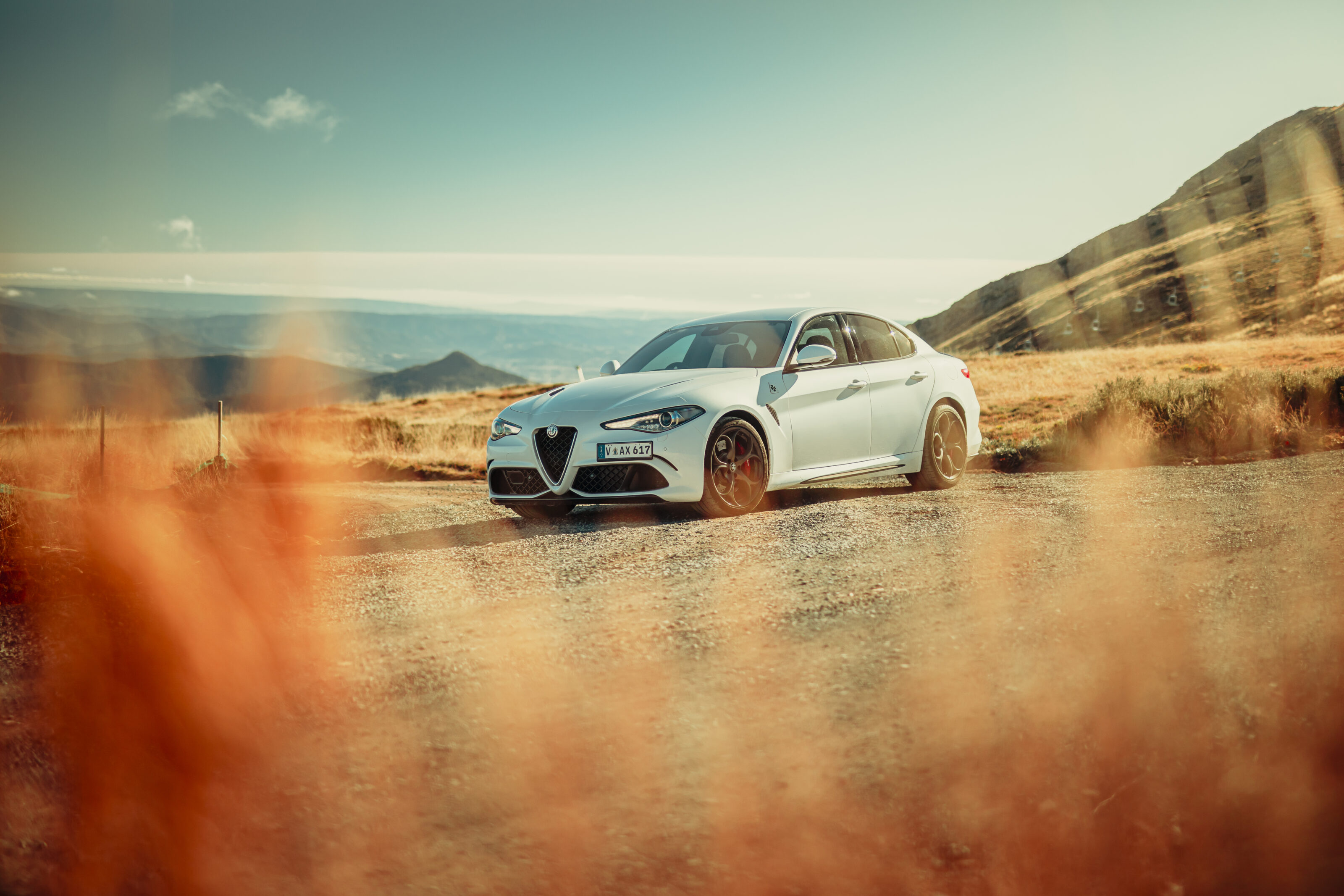
Alfa Romeo Giulia Q specs
- Body: 4-door, 5-seat sedan
- Drive: rear-wheel
- Engine: 2891cc V6, DOHC, 24v, twin-turbo
- Bore x Stroke: 86.5 x 82.0mm
- Compression: 9.3:1
- Power: 375kW @ 6500rpm
- Torque: 600Nm @ 2500-5500rpm
- Power-to-weight: 230kW/tonne
- Transmission: 8-speed automatic
- Weight: 1633kg
- Suspension: double A-arms, coil springs, adaptive dampers, anti-roll bar (f); multi-links, coil springs, adaptive dampers, anti-roll bar (r)
- L/W/H: 4639/1873/1426mm
- Wheelbase: 2820mm
- Tracks (f/r): 1555/1607mm (f/r)
- Steering: electrically assisted rack-and-pinion
- Brakes: 360m ventilated discs, 6-piston calipers (f); 350mm ventilated discs, 4-piston calipers (r)
- Wheels: 19.0 x 8.5-inch (f) 19 x 10-inch (r)
- Tyres: 245/35 ZR19 95Y (f) 285/30 ZR19 98Y (r) Pirelli P Zero Corsa
- Price: $138,950
- Pros: Engine note; charismatic power delivery; styling; ride; handling
- Cons: No halfway ESC mode; cabin a little basic; brakes take getting used to
We recommend
-
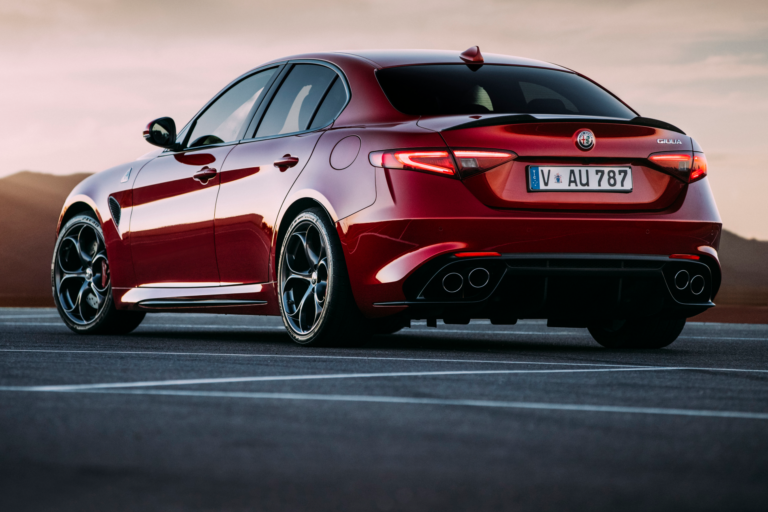 News
NewsAlfa Romeo scraps Giorgio platform for new EV architecture
The platform has been used since 2015 and cost around five billion euro to create
-
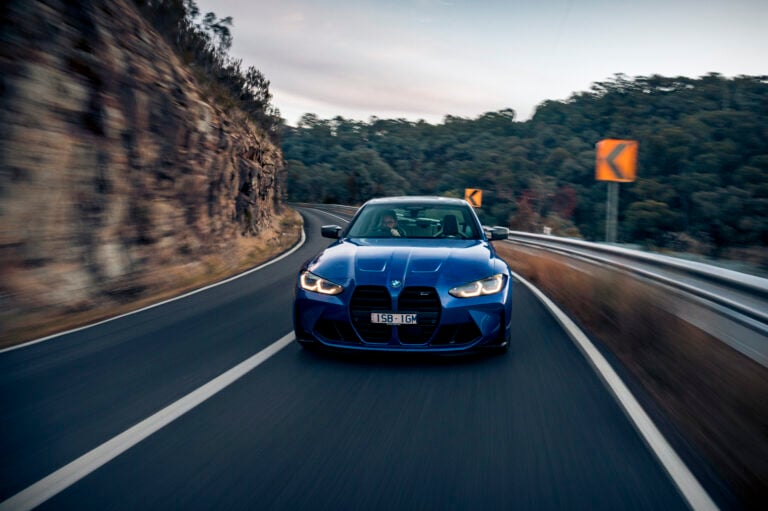 Reviews
Reviews2021 BMW M3 Competition review
Enough about the divisive styling; now is the time to pound the M3 for answers to the questions that count
-
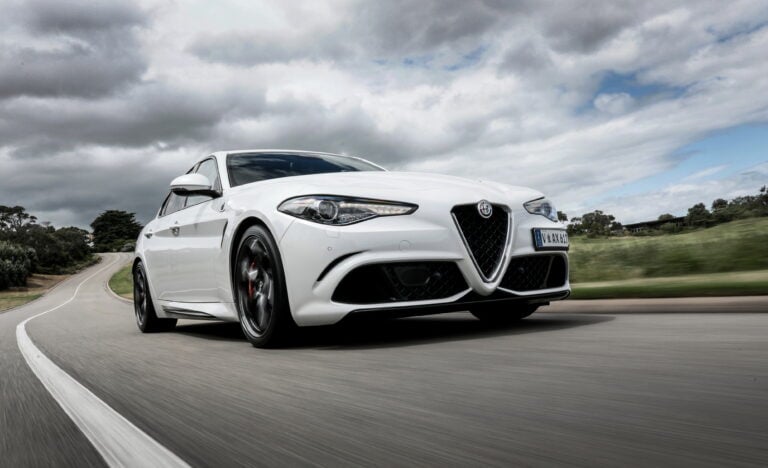 Reviews
Reviews2021 Alfa Romeo Giulia Q review
Flamboyant Italian loses none of its charm in keeping up with the times


